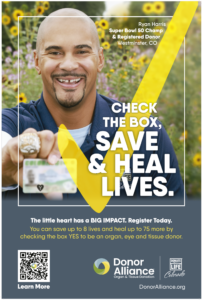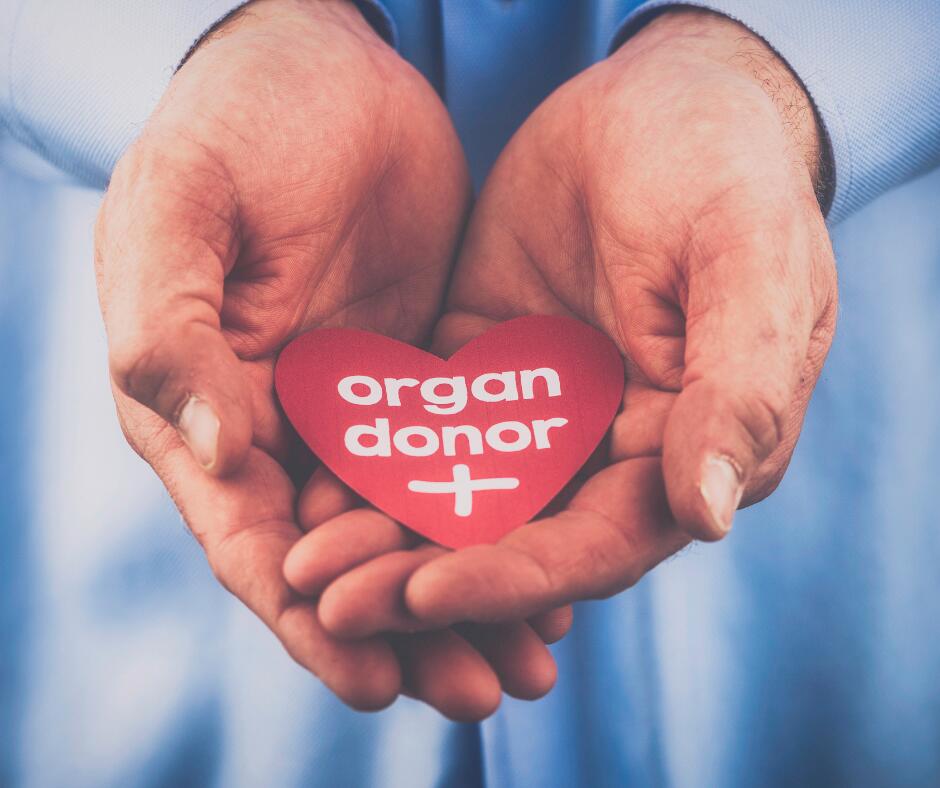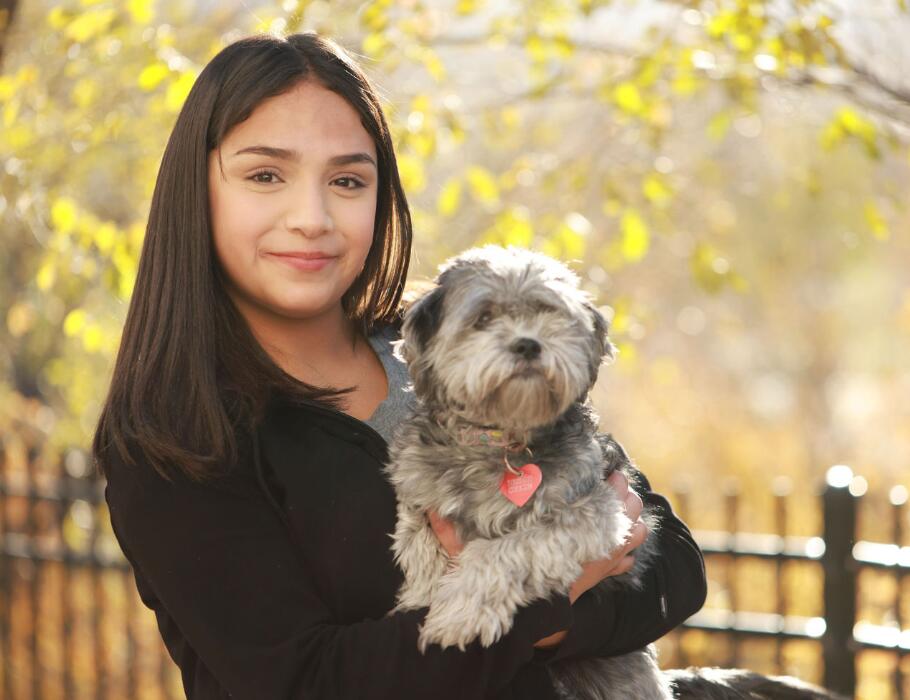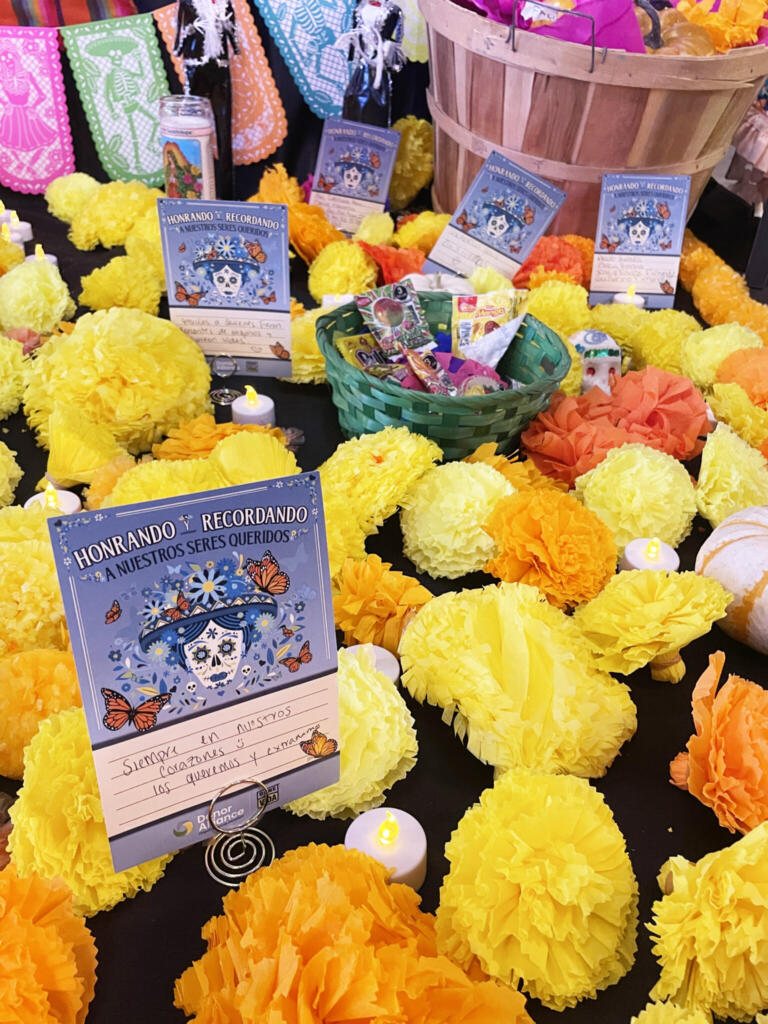When you say yes to registering as an organ, eye, and tissue donor at the Driver License Office, it’s more than a quick decision at the counter. It’s a decision that can carry forward long after your own life is over. But you might wonder: what organs can be donated?
Do you know what organs can be donated and transplanted?
Organ donation is giving the gift of life by providing one organ, multiple organs, or a partial organ for transplant into one or more people.
While the list of organs and tissues that can be successfully transplanted continues to grow with advances in technology, eight major organs can be transplanted after death. Living donation is another incredible way you can help save the life of someone waiting for an organ transplant.
Which Organs Can Deceased Donors Donate?
Deceased organ donation is giving the gift of life after you pass away by providing an organ, organs or a partial organ to be transplanted into one or more people. A deceased donor can donate and save up to eight lives by donating organs after death. The major organs that can be transplanted include the heart, intestines, kidneys, liver, lungs, and pancreas. In some cases, the liver can even be split to help two people.
Saying ‘yes’ to donation is saying yes to giving hope. It’s a way to make something meaningful out of loss and give someone a second chance at life.
To make your decision to sign up as an organ, eye, and tissue donor, register here in Colorado or Wyoming.
Which Organs Can Living Donors Donate?
Living donation is another option to give the gift of life to a person in need of a transplant. Living donation is not part of the Donate Life Colorado Organ and Tissue Donor Registry and should be discussed directly with a transplant center. Although Donor Alliance is not involved in this donation process, it’s an incredible way you can help save the life of someone waiting for a transplant.
A living person can donate a kidney or part of the liver, lung, intestine or pancreas to another person in need of a transplant. Each potential living donor must go through a full medical evaluation that includes lab tests, a physical examination, and a psycho-social examination. The decision about whether to accept the living donor is then made by the health care team at the transplant center.
Living kidney donation is the most common living donation and helps save thousands of lives each year. Donating a portion of one’s lung, liver, pancreas and intestine are more rare circumstances. You can learn more about living donation and transplant centers in our area to see if living donation is an option for you.
We encourage you to learn the facts about organ, eye and tissue donation so you can make an informed decision. Then, sign up anytime online, and each time you get your driver’s license or state ID at your local Driver Licenses Office in Colorado, we honor your most recent decision, so it is important to say ‘yes’ every time.
Remember to always share your heroic and lifesaving decision with your family and loved ones.
Celebrating 35 years of community cheer, your Greater Cheyenne Chamber of Commerce proudly presents the Cheyenne Christmas Parade!
The parade winds its way through the historic downtown of Cheyenne. This year’s theme is “Candyland Christmas” and you can join Donate Life Wyoming as a Lifesaver to inspire the public to give the gift of life this holiday season!
See parade route for location details!
Donation Essentials Blog
There’s a moment at the DMV that holds more power than many realize. Between updating our address and choosing a photo, there’s a small box asking if we want to become an organ, eye, and tissue donor. For many Coloradans, that box represents something much bigger than a simple yes or no, it’s a chance to save lives.
We’re launching a powerful new campaign to remind residents just how meaningful that choice can be. The Donor Alliance “Check the Box” campaign brings together prominent voices from across our state, including former Denver Broncos player and NFL Super Bowl champion Ryan Harris alongside local college athletes, to inspire more people to register as organ, eye, and tissue donors.
Rocky Mountain Strong: A Community Built on Compassion
“Rocky Mountain Strong’ reflects the strength, compassion, and resilience of the Coloradans that make life-saving organ, eye and tissue donation possible,” said Jennifer Prinz, our president and CEO. “‘Check the box’ is how we put that spirit into action. By making the decision to check the box ‘YES,’ you’re giving hope to the more than 1,300 neighbors waiting for a life-saving transplant right here in Colorado.”
The campaign’s tagline, “Check the Box,” emphasizes just how simple—and powerful—this decision really is. One box checked can create a ripple effect of hope throughout our community. The numbers tell the story: for every YES box checked, there are 75 neighbors who have a chance to heal. These are people who ride down the same streets as you, root for the same teams, and call Colorado home. Simple for you. Life-changing for them.

Celebrating Those Who Make It Possible
Throughout November, we’re hosting events and ribbon cuttings at DMV offices across Colorado to unveil the new campaign materials and honor the DMV employees who play a vital role in saving lives every single day.
“The Division of Motor Vehicles is proud to partner with Donor Alliance on the ‘Check the Box’ campaign” said Electra Bustle, Senior Director of the DMV. “Every day, our dedicated team witnesses the profound impact of organ, eye, and tissue donation. By simply checking ‘YES’ at the DMV, you are making a life-saving decision that offers hope and healing to countless individuals and families in our community. It’s a small action with an immeasurable impact.”
The campaign will reach Coloradans through billboards, digital advertising, social media, and community partnerships. You’ll also notice refreshed materials at DMV locations throughout the state, making it easier than ever to understand the impact of your decision.
How You Can Help
Everyone can register to be an organ, eye, and tissue donor. Whether you’re renewing your license at the DMV or want to register online, the process is straightforward. Visit DonorAlliance.org or DonateLifeColorado.org to learn more and register today.
Right now, more than 1,300 of our Colorado neighbors are waiting for a life-saving transplant. Your decision to check the box could give them the chance they’ve been waiting for. That’s Rocky Mountain Strong in action.
Denver, CO — November 12, 2025 — Donor Alliance, the federally designated organ procurement organization serving Colorado and Wyoming, today announced the rollout of its “Check the Box” campaign in Colorado. The campaign features prominent local voices including former Denver Broncos player and NFL Super Bowl champion Ryan Harris and local college athletes, encouraging residents to register as organ, eye, and tissue donors.
The comprehensive campaign will reach Coloradans through billboards, digital advertising, social media, and community partnerships, all bringing to life the organization’s refreshed Rocky Mountain Strong brand theme. Residents will also see refreshed materials at Division of Motor Vehicles (DMV) locations throughout Colorado, where more than 60% of residents have made the life-saving decision to become organ and tissue donors.
“The updated look and feel for our new campaign truly embodies the spirit of our community” said Jennifer Prinz, president and CEO of Donor Alliance. “’Rocky Mountain Strong’ reflects the strength, compassion, and resilience of the Coloradans that make life-saving organ, eye and tissue donation possible. ‘Check the box’ is how we put that spirit into action. By making the decision to check the box ‘YES,’ you’re giving hope to the more than 1,300 neighbors waiting for a life-saving transplant right here in Colorado.”
To celebrate the rollout of the new campaign, throughout the month of November, Donor Alliance will host in-person events and ribbon cuttings at DMV offices across the state to unveil the new campaign and honor the DMV employees who play a vital role in saving lives through donation every day.
“The Division of Motor Vehicles is proud to partner with Donor Alliance on the ‘Check the Box’ campaign” said Electra Bustle, Senior Director of the DMV. “Every day, our dedicated team witnesses the profound impact of organ, eye, and tissue donation. By simply checking ‘YES’ at the DMV, you are making a life-saving decision that offers hope and healing to countless individuals and families in our community. It’s a small action with an immeasurable impact.”
The “Check the Box” campaign emphasizes that everyone can register to be an organ, eye and tissue donor, and when you check the box YES, one day you may save someone’s life. The campaign’s tagline, “Think Inside the Box,” underscores how one simple decision at the DMV can create a ripple effect of hope. For every YES box checked, there are 75 neighbors who have a chance to heal. Someone who rides down the same streets. Roots for the same team. Simple for you. Life-changing for them.
Join us in spreading holiday cheer and raising awareness at the Denver Parade of Lights this holiday season! The parade features over 40 illuminated floats, giant balloons, marching bands, equestrian units, cultural displays, and special appearances from Major Waddles the Penguin and Santa Claus. Donor Alliance will proudly showcase our large Gift of Life balloon float in the parade, surrounded by our Advocates for Life and staff.
Location: The parade starts at the Denver’s City and County Building and winds through downtown. You can view it for free along the route which includes Tremont Street (between 14th and 17th), 17th Street (from Tremont to Arapahoe), Arapahoe Street (between 17th and 15th), and 15th Street (from Arapahoe to Glenarm)
Parking: Parking garages are available around the downtown area.
Join us at the Denver Parade of Lights this holiday season! The parade features over 40 illuminated floats, giant balloons, marching bands, equestrian units, cultural displays, and special appearances from Major Waddles the Penguin and Santa Claus. Donor Alliance will proudly showcase our large Gift of Life balloon float in the parade, surrounded by our Advocates for Life and staff.
The parade starts at the Denver’s City and County Building and winds through downtown. You can view it for free along the route which includes Tremont Street (between 14th and 17th), 17th Street (from Tremont to Arapahoe), Arapahoe Street (between 17th and 15th), and 15th Street (from Arapahoe to Glenarm).


